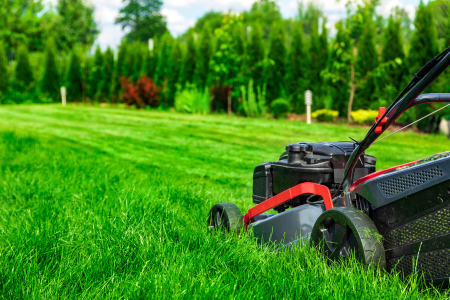As a new homeowner, you may have a lot on your plate, one of which is taking care of your lawn. Keeping your lawn healthy and attractive requires some effort and knowledge, but do not worry!
With the right maintenance and care, you can have a lush, green lawn that impresses your neighbors.
Ready for the most gorgeous lawn you have ever seen? Here are some important lawn care tips for new homeowners to keep in mind.
1. Understand Your Lawn
One of the most important things you can do as a new homeowner is to understand your lawn. Not all lawns are created equal and giving your lawn the care it needs will ensure it looks its best.
Knowing your lawn type is crucial to proper lawn care. There are three main types of grass, cool-season, warm-season, and transitional grasses. Once you know your type of grass, you can better understand what it needs to thrive.
The next important factor in understanding your lawn is the soil pH. The pH of your soil determines its acidity, which affects the nutrients available to your plants. Most turf grasses like a soil pH between 6.0 and 7.0. If your soil pH is too low or high, your lawn can become stressed, making it more susceptible to disease and pests.
A simple soil test from your local garden center can help you determine your soil pH, and from there, you can adjust your lawn care routine accordingly.
Another important factor to take note of is the amount of sun and shade your lawn receives. This is important because different grass types require different amounts of sunlight.
2. Mow Regularly- and Correctly
Mowing is a critical aspect of lawn care because it helps to keep your lawn looking neat and well-kept. Regular mowing ensures that the grass blades remain at a consistent height and do not become too tall, which makes your lawn appear untidy. When you mow regularly, it also helps to keep your lawn healthy and enables it to grow thicker, which can prevent weed growth.
When it comes to mowing, the height of the grass blades is crucial. Avoid cutting the grass too short or leaving them too long. It is recommended to mow your grass to a length of 2.5-3 inches tall.
Taller grass can help to shade the soil, which slows down water evaporation, and provides a microclimate for the growth of beneficial microorganisms. Shorter grass is at risk of drying out because it has less surface area for photosynthesis and cannot shade the soil enough to keep it moist.
Timing is also important when it comes to mowing the grass. Mowing during the hottest part of the day, when the sun is beating down, can do more harm than good. This can cause the grass to become stressed and even lead to damage.
The best time to mow your lawn is in the early morning or late evening when the temperatures are cooler. This way, you can avoid possible heat stress and ensure that the lawn does not lose too much moisture.
3. Water Properly
The importance of watering cannot be overstated when it comes to lawn care. Water helps in facilitating the photosynthesis process in plants, which is crucial for the growth and development of your lawn. When your lawn does not get enough water, it starts to turn brown, and eventually dies. It is therefore essential to understand the importance of watering and how to do it properly.
When it comes to watering your lawn, there is a right way to do it. First, water in the early morning when there is no wind, and the temperatures are cooler. This allows the water to penetrate the soil easily without evaporating. Avoid watering in the evening as the moisture can lead to fungal growth.
Also, make sure that you water the soil and not the leaves as leaves do not absorb water. Deep watering is better than light watering as it allows the roots to grow deeper into the soil.
It can be tempting to water your lawn every day, but over-watering can be detrimental to your lawn. When you over-water, the soil becomes waterlogged, and that can lead to root rot and other unhealthy conditions. As a rule of thumb, water your lawn every two to three days, and only water when the top layer of soil is dry.
Know that under-watering can have the same negative effect on your lawn as over-watering. Signs of under-watering in your lawn include wilting, brown spots, and dried leaves. To avoid under-watering, monitor your lawn regularly and keep an eye out for signs of stress. When you see these indications, adjust your watering and apply water thoroughly.
Investing in a sprinkler system can save you time and help you water your lawn efficiently. Alternatively, irrigation systems have a timer, which means that your lawn gets watered even when you are away or busy.
4. Fertilize Wisely
Fertilizing is one of the most important things you can do to keep your lawn healthy. Fertilizer provides essential nutrients, making your grass thicker and greener. However, it is essential to apply it in the right amount, or you risk doing more harm than good. Applying too much can cause root burn or even kill your grass, while too little will not yield the desired results.
Timing is also essential when it comes to fertilizing your lawn. The best time to apply fertilizer is in the fall or late spring. This is when the grass is growing actively and will make the most of the nutrients. You also need to choose the right kind of fertilizer based on your soil’s needs. For example, if your soil is acidic, you will need a fertilizer with a higher pH.
5. Weed with Care
Even if you fertilize regularly, weed growth can still be a problem for your lawn. Weeds are unsightly and can compete with your grass for nutrients and moisture. To keep them at bay, it is important to weed regularly.
You can identify weeds by their distinct features such as their leaves, flowers, and growth pattern. Once you have identified the weeds, you can remove them manually by pulling them up from the roots. But be careful not to damage the grass or soil in the process. Additionally, you can also use herbicides — but be sure to read the instructions carefully and use them sparingly.
To prevent weed growth in the first place, make sure to keep your lawn healthy by following the fertilizing tips outlined above. Furthermore, it is important not to overwater your lawn, as weeds tend to thrive in moist environments.
Final Thoughts
Taking care of your lawn may seem overwhelming at first, but with these easy lawn care tips, you can make it manageable and even enjoyable! Keep in mind that proper lawn maintenance requires consistent effort, patience, and attention to detail.
By following these simple tips, you will be on your way to having a healthy, beautiful lawn that you can be proud of.
Now, if only we had some tips to help you deal with that pesky HOA. You are on your own, there – but at least your lawn looks great!
About the Author: Kym Preslar is a bit of a gardening and home improvement fanatic. She has been working on her garden for over 5 years and loves writing about everything landscape related. Whether it is keeping care of sod or the greenhouse, she has been there and done it all. Currently, she is enjoying her time working at SodLawn as their Content Manager.


